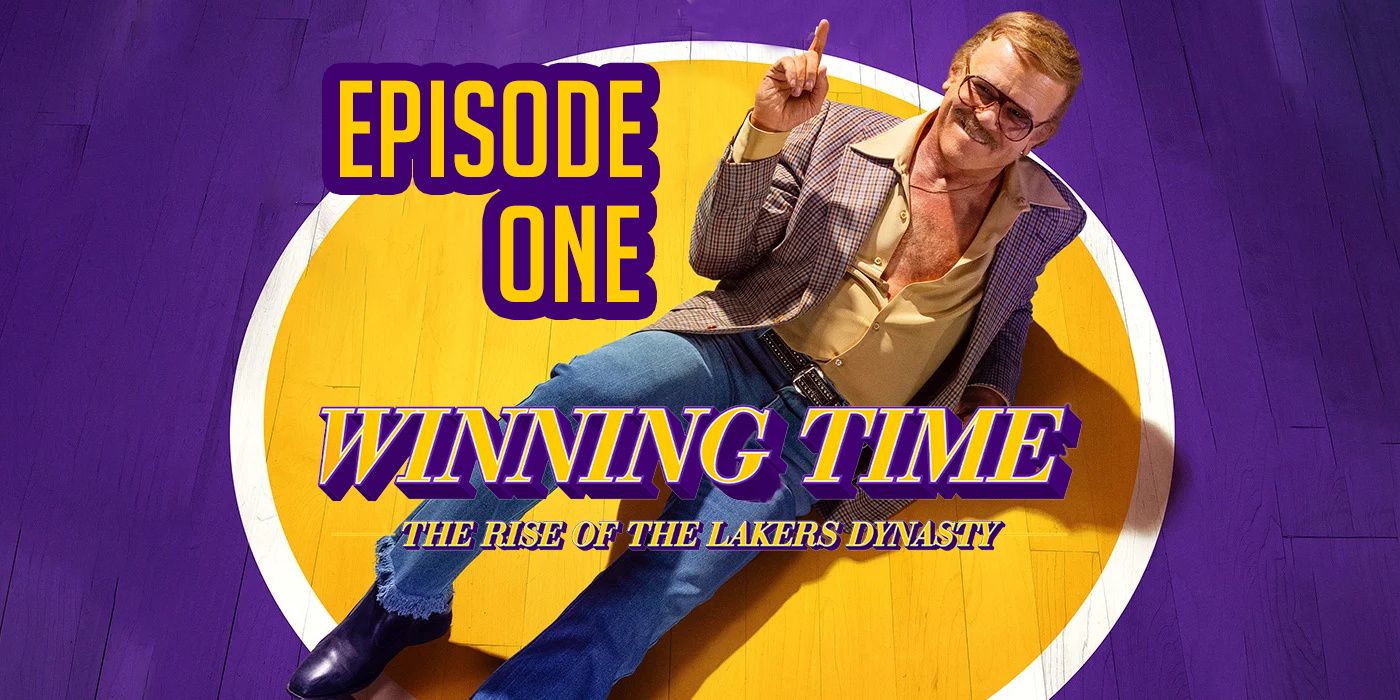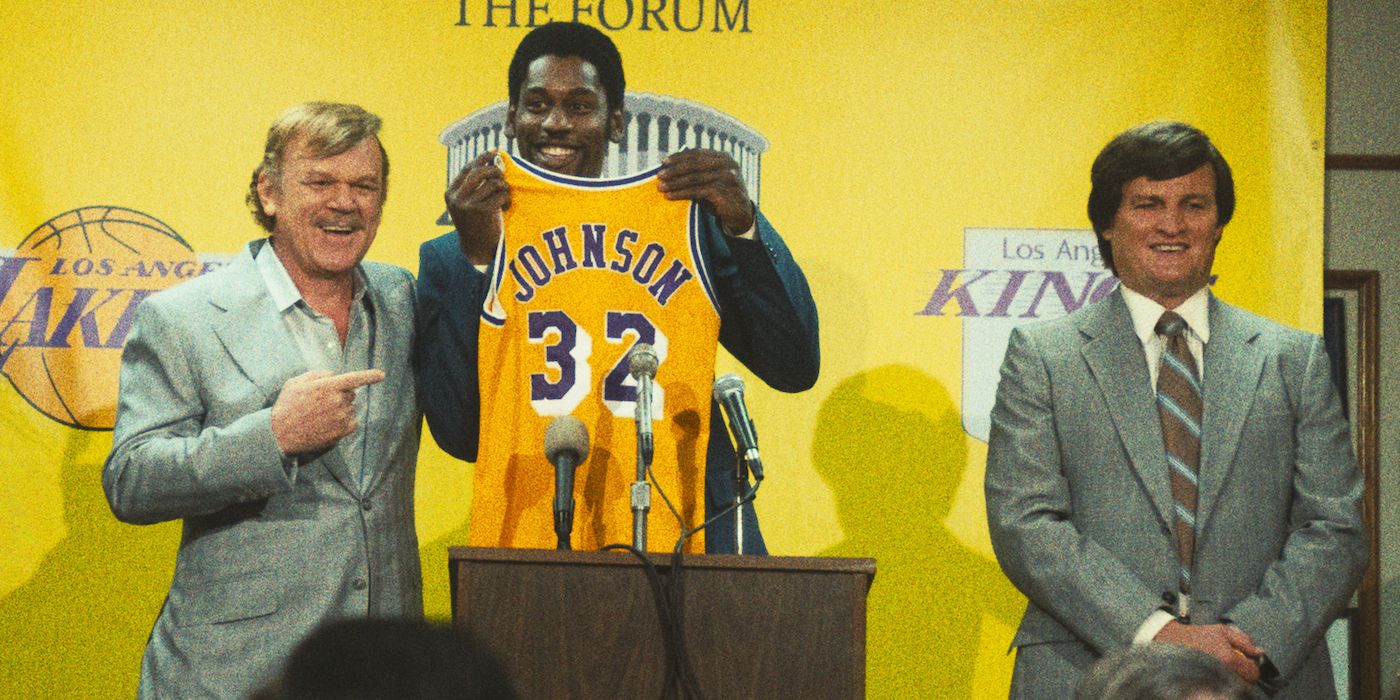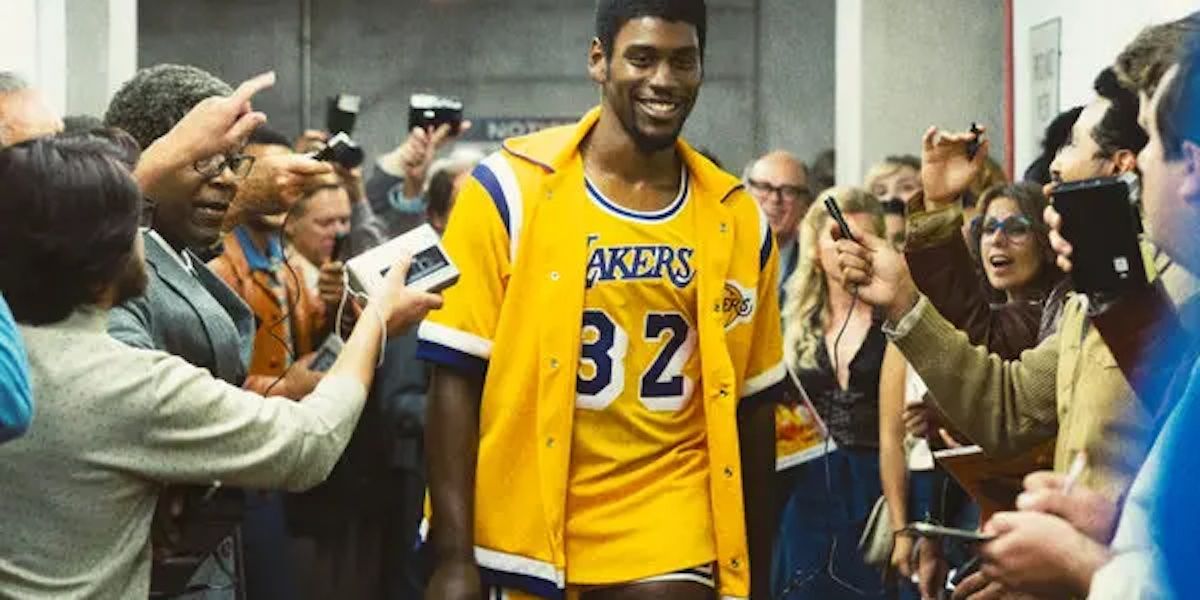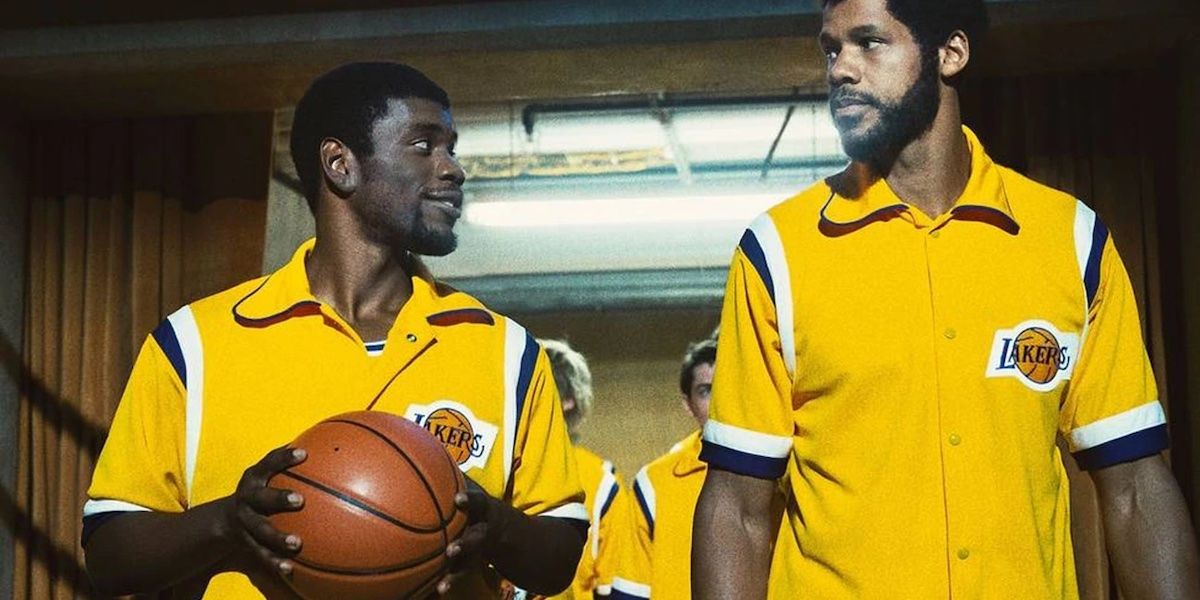The opening moments of the first episode of the new HBO series Winning Time: The Rise of the Lakers Dynasty begins with John C. Reilly’s Jerry Buss giving an extended, fourth-wall-breaking monologue. Speaking directly to camera as he walks through the Playboy Mansion, it marks the beginning of a plan Buss has to reinvent the NBA by buying the Los Angeles Lakers and bringing on Quincy Isaiah's Magic Johnson. If there was ever any doubt, this first scene makes it clear that director Adam McKay is staying true to the style of his prior work. It marks the beginning of what is one of the most woefully chaotic first episodes of a show in recent memory. Despite promising material, it reveals that when a show's style is flashy and eye-catching to an extreme degree, it risks undermining the promise of a good story.
Don’t let it be mistaken, a show about the creation of the dynasty that was the Los Angeles Lakers offers an abundance of promise. There are many intriguing aspects that a series like this is only beginning to uncover, even if it is hard to fully appreciate them behind the mess that is the show’s visual presentation. A behind-the-scenes look at the creation of one of the greatest basketball teams of all time is a great hook for a show. It has a history that actually deserves an eight-episode run as opposed to the whole host of shows that are stretching their material to a breaking point. Winning Time has the possibility to be a winning show, but it is incredibly difficult to feel that when it is buried under the excesses of everything else.
It isn’t just the fourth wall breaking, though it must be noted that that doesn’t serve the story in the slightest and actually distracts from it. There isn’t much new information or depth provided in this first scene, making it start out feeling like a mockumentary as opposed to a drama series that wants to build interesting characters. Where things begin to get really wonky is when there is a whole host of on-screen text that almost covers up the screen entirely. Sometimes it is more reserved, such as when there is a list of financial calculations of how much it will cost to buy the team that accompanies Buss saying this aloud. It is redundant, but not as glaringly bad as the other moments where the screen just becomes so busy that it risks losing sight of what is happening save for the unnecessary overlays of text.
It is all part of how the show is too busy when it can and should have just let many of these scenes play out without fifty other things going on. Yet it seems McKay can’t help himself, structuring scenes with an eye for flair that only makes everything feel stilted, convoluted, and hollow. One scene on a golf course decides that now is the time for the most bizarre and unnecessary use of split-screen when characters are standing right next to each other. It seems like it is maybe wanting to offer a close-up, though the character is staring down and away from the camera anyway while he attempts to make a put. It then abandons the split-screen for the same character to turn back, though with his range of motion truncated in such a fashion that he lifts his head twice. It is a small detail though it completely throws off the pacing of the dialogue and movement within the scene.
The connective tissue of the moment is severed in favor of just throwing in something that was possibly attempting to be a visual gag, only with no sense of purpose in how to make use of space or the staging. It is indicative of how the editing of the series ends up more closely resembling the infamous Bohemian Rhapsody in how it hacks everything to pieces, making it almost all fall apart just to add in random inserts and cutaways. A later scene is the most egregious example of this as members of the audience watching a one-on-one get dropped in for brief flashes without any real purpose or reason. Perhaps it is to provide cover for the fact that the actors playing are not actually that good at basketball. However, the manner in which it does this is so all over the place that the give and take of the scene is lost. All so that we can see random faces in the crowd for no more than a second? It is as inexplicable as it is frustrating to watch what could be a good scene be undone by its construction.
The show’s first episode reveals that, at every single turn, it can’t seem to get out of its own way to tell a good story. The ending to the golf scene cuts to a wide that more closely resembles a fuzzy, home video that ostensibly seems to be trying to recreate a late '70s aesthetic. Yet for it to jump around in visual presentation from shot to shot in such a manner doesn’t draw you in. Quite the opposite, it takes you out of it. It is a shallow mimicry that it dips its toe into without fully leaping in, leaving the audience out to dry on what it actually is going for. For some shots to look crisp and clean while others to look far more haphazard, even grimier, makes it a tonal mess that changes its mind every second about what it wants to be. That lack of confidence or consistency makes for a deeply fractured viewing experience where the cracks are already beginning to show, even in the first episode.
Of course, whether this dooms the show for you will come down to personal preference. If you like the style of McKay’s prior work and want more of it, then this is perhaps the purest form you could hope for. If you want a more competently structured visual presentation where there is something resembling artistic vision, this is going to lose you pretty quickly. As Vulture writer Jen Chaney aptly stated in the roundtable “Does Winning Time Really Need to Look Like That?,” "the viewer needs to hop on board with the approach or risk being left behind" as it sets out to be “a visceral experience above all else.” The risk becomes that such an experience means it doesn’t have to actually grapple with themes or character growth as much as the story deserves. When your show is all about the flashy vibes and chaotic editing style, it can’t slow down to actually sit with characters for any length of time.
That is unfortunate as this is the good stuff that the show does have going for it, even as it is not given enough emphasis. The best moment of this first episode is not in one of the fast-paced, incoherently edited scenes. It is in a lunch scene where Magic first sits down with Buss to discuss coming onto the team. Key to this is a typically outstanding Rob Morgan as Earvin Johnson Sr. who brings a gravitas and humanity that grounds the scene. It is just characters talking in a room about the future, bringing life to what is an otherwise lifeless recreation of an aesthetic. It offers a glimpse of what could be a well-told story, though only ever so briefly before we soon leave it. It is in moments like these that characters can enhance a story, aligning with the visual presentation to deepen key themes. However, if the experience of throwing everything at the wall is made primary as it was in this first episode, it is going to completely take up all the oxygen and rob the story of its full impact.




